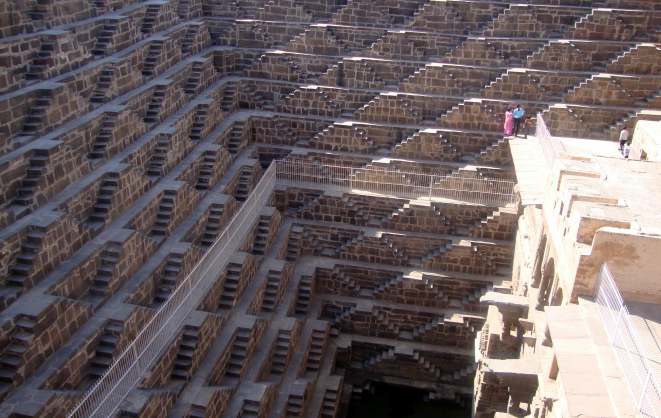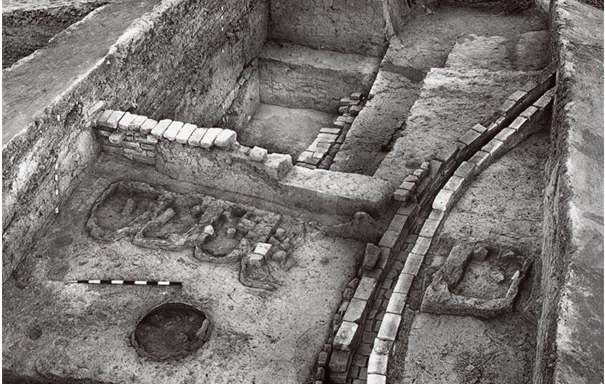Water conservation includes all the policies, strategies and activities to sustainably manage the natural resources of fresh water, to protect the hydrosphere, and to meet the current and future human demand. Population, household size, and growth and affluence all affect how much water is used. Factors such as climate change have increased pressures on natural water resources especially in manufacturing and agricultural irrigation. It is as old as civilization itself.
Some of the methods and research studies of ancient time practise of water conservation are given below;
The Indus Valley Civilization
The Indus Valley Civilization, that flourished along the banks of the river Indus and other parts of western and northern India about 5,000 years ago, had one of the most sophisticated urban water supply and sewage systems in the world. The fact that the people were well acquainted with hygiene can be seen from the covered drains running beneath the streets of the ruins at both Mohenjodaro and Harappa.
Dholavira
Another very good example is the well-planned city of Dholavira, on Khadir Bet, a low plateau in the Rann in Gujarat. One of the oldest water harvesting systems is found about 130 km from Pune along Naneghat in the Western Ghats. A large number of tanks were cut in the rocks to provide drinking water to tradesmen who used to travel along this ancient trade route. Each fort in the area had its own water harvesting and storage system in the form of rock-cut cisterns, ponds, tanks and wells that are still in use today. A large number of forts like Raigad had tanks that supplied water.
Western Rajasthan
In ancient times, houses in parts of western Rajasthan were built so that each had a rooftop water harvesting system. Rainwater from these rooftops was directed into underground tanks. This system can be seen even today in all the forts, palaces and houses of the region.
Jodhpur
The old city of Jodhpur has over 200 stepwells and they were built from around the 6th century onward as part of an incredibly sophisticated water architecture,” he explains. During the little rain that the region receives between June and September water is diverted from canals built on the hilly outskirts of the city to man-made tanks or talabs.

Arthashastra by Chankya
The text mentions how different tax slabs were created for the people at that time. For example water drawn from natural resources tax levied was 25 percent of the produce. For water drawn from storage it was 20 percent.
Irrigation Management by Village Assemblies
An appraisal of the inscriptions relating to medieval South India, as reported by historians24 reveal various functions relating to irrigation exercised by the village assemblies which indicate the following kinds of powers and functions that they possessed over irrigation.
- Ownership of water resources.
- Powers to arrange for construction, repairs and maintenance of tanks.
- Powers relating to land transactions relating to irrigation.
- Management of water supply.
- Levy and collection of cess for irrigation; powers to assign cess.
- Powers to engage and remunerate local functionaries.
- Dispute settlement.
- Maintenance of records.
- Relationship with Central Government in certain matters.
Harappa and Mohenjodaro references
The city was built in a semi-arid region averaging 260 mm rainfall annually. There were no perennial water sources. Subterranean water was saline, potable water scarce.
Two storm water channels, Manhar (north) and Mansar (south) flanked the city. The city was laid out on a 13 m gradient (higher in the east to lower in the west), ideal for reservoirs. It seems the planners knew this. They made a series of 16 reservoirs between the inner and outer walls of the city to collect the monsoon runoff from the channels, which amounted to 250,000 cu.rr. of water.
Inside the citadel (inner city), there are large storm drains with apertures. These were not for wastewater, as archaeologists first thought, since they were not connected to housing or bathing platforms. These were for rainwater. The air-apertures ensured easy passage of rainwater.
One of the earliest sites of the Indus Valley civilisation, Dholavira in the Gujarat state has well documented storage reservoirs in the form of lakes to collect surface run offs during the rainy season1. Not only that, there were intricate channels and check dams for various purposes. Such structures have also been found in other sites such as Harpapa and Mohenjodaro. Sringaverapura tank in modern day Uttar Pradesh was built sometime in the 1st BC and is a shining example of engineering during the early period of Indian civilisation. It had a remarkable system to clean water through desiltation2. Naneghat in modern day Maharshtra is perhaps the oldest example of harvesting system for storage of water.

Reseervoirs to conserve water; A research study
Univ. of Cincinnati research at the ancient Maya site of Medicinal Trail in northwestern Belize is revealing how populations in more remote areas – the hinterland societies – built reservoirs to conserve water and turned to nature to purify their water supply. Jeffrey Brewer, a doctoral student in the Univ. of Cincinnati’s Department of Geography, will present his findings on April 11, at the Association of American Geographers’ annual meeting in Los Angeles.
Brewer’s research continues a UC exploration of the ancient Maya civilization that has spanned decades. The site for Brewer’s research, which was primarily occupied during the Classic Period (AD 250-900), functioned as a rural architectural community on the periphery of the major ancient Maya site of La Milpa.
Brewer says this smaller, remote settlement lacks the monumental architecture and population density typically associated with the major Maya sites, but shows similar, smaller-scale slopes, artificial terraces and water reservoirs that would have been utilized for farming and water management.
Brewer’s discovery of artificial reservoirs – topographical depressions that were lined with clay to make a water-tight basin – addressed how the Maya conserved water from the heavy rainfall from December to spring, which got them through the region’s extreme dry spells that stretched from summer to winter. “They also controlled the vegetation directly around these reservoirs at this hinterland settlement,” says Brewer. “The types of lily pads and water-borne plants found within these basins helped naturally purify the water. They knew this, and they managed the vegetation by these water sources that were used for six months when there was virtually no rainfall.”

Rainwater harvesting in ancient times
Civilisations in the Indus Valley were far more advanced than we may think nowadays. In many of the ancient cities that still remain, we can still find huge vats that were cut into the rock to collect water when there was torrential rainfall. These were used to keep the population and local vegetation going in hotter, dryer times and were fed by numerous stone gullies that weaved their way through the city. Some of these rock vats are still used today in parts of India. Another technique that has been used for hundreds of years in India is to build water harvesting systems on top of the roofs of houses. It’s a simple technology that has spread across the world, particularly to countries such as Brazil and China.
Source:
- laboratoryequipment.com
- myindiamyglory.com
- edugreen.teri.res.in
- greencleanguide.com
- renewableenergyhub.co
- wikimedia.org
- thebetterindia.com
- quora.com

